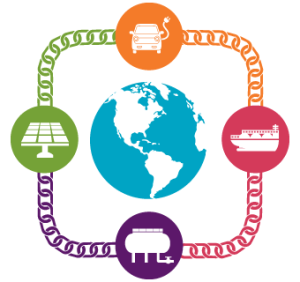K&L Gates Blockchain Energizer – Volume 17
By Molly Suda, Buck B. Endemann, and Ben Tejblum
 There is a lot of buzz around blockchain technology and its potential to revolutionize a wide range of industries from finance and health care to real estate and supply chain management. Reports estimate that over $1.4 billion was invested in blockchain startups in 2016 alone, and many institutions and companies are forming partnerships to explore how blockchain ledgers and smart contracts can be deployed to manage and share data, create transactional efficiencies, and reduce costs.
There is a lot of buzz around blockchain technology and its potential to revolutionize a wide range of industries from finance and health care to real estate and supply chain management. Reports estimate that over $1.4 billion was invested in blockchain startups in 2016 alone, and many institutions and companies are forming partnerships to explore how blockchain ledgers and smart contracts can be deployed to manage and share data, create transactional efficiencies, and reduce costs.
While virtual currencies and blockchain technology in the financial services industry have been the subject of significant debate and discussion, blockchain applications that could transform the energy industry have received comparatively less attention. Every other week, K&L Gates Blockchain Energizer will highlight emerging issues or stories relating to the use of blockchain technology in the energy space. To subscribe to the Blockchain Energizer newsletter, please click here.
IN THIS ISSUE
- Energy Web Foundation Launches Public Test of Its Energy Blockchain Network
- Pilot Project Launches to Use Energy Storage and Blockchain to Balance the Grid
- At COP 23, the Climate Ledger Initiative Focuses on How Blockchain Can Support Paris Agreement
- Blockchain Platform for Commodities Trading Under Development
To view more information on theses topics in Volume 17 of the Blockchain Energizer, click here.
